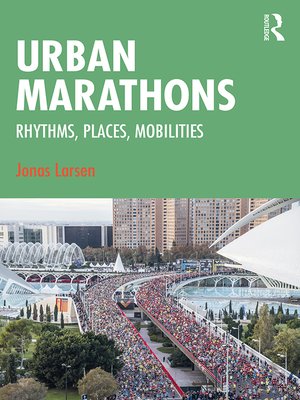
Sign up to save your library
With an OverDrive account, you can save your favorite libraries for at-a-glance information about availability. Find out more about OverDrive accounts.
Find this title in Libby, the library reading app by OverDrive.



Search for a digital library with this title
Title found at these libraries:
| Loading... |
This original social science text approaches marathon running as an everyday practice and a designed event, to draw upon and contribute to the literature on practice theory, urban events, rhythmanalysis and mobility. It bridges sport studies and discussions within sociology and geography about practice, movement and the city.
Inspired by theoretical debates about embodied and multi-sensuous mobilities, social and material practices, and urban rhythms, this book explores the characteristics of marathon running as a bodily practice on the one hand and, on the other, marathon training grounds and events as unique places. This account takes marathon running seriously, using sociological and geographical theory to understand the practice in and of itself. Based on original empirical research and accessible to readers, taking them to training sessions in Copenhagen and to marathons in Tokyo, Kyoto, Berlin, Frankfurt, Valencia and Copenhagen, it draws out the globalised, codified and generic nature of marathon practices and design, yet also brings out the significant local differences. The book examines in ethnographic detail how marathon practices and places are produced by various materialities, cultural scripts, experts, runners and spectators, and practiced in embodied, multi-sensuous and 'emplaced' ways by ordinary runners. It develops a sociological practice approach to marathon running and geographical understanding of marathon places and rhythms. It demonstrates that marathon running is of broad interest because it calls for and allows lively and expressive ways of conducting and writing research and understanding the becoming of bodies, the intertwining of biological and mechanical rhythms, and the eventful potential of streets.
It will appeal to postgraduate students and scholars in sport studies, geography and sociology interested in running, active mobility and ethnography, as well as tourism and urban events. The book will also appeal to general readers with an interest in marathon running.






